My Obsession with the Llewellin Setter
My mission is to help you have a healthier dog and breeders to raise healthier Llewellin Setters puppies through educational content based on over twenty years raising, training, and breeding Llewellin Setters. To help support these efforts, this page may contain affiliate links. I may earn a small commission for qualifying purchases at no cost to you.

My goal is to produce the best bird dogs in the world. Not just good bird dogs, but the best—the most intelligent, the most instinctive, the most beautiful, exuding class to the fullest extent, the easiest training, eager-to-please, bold, best family companions all-rolled-into-one-bird-dogs—in the world. Not just in the UP, not just in the mid-west or the east coast, the best bird dogs in the world. period. And to have it repeated over and over and over in every Llewellin Setter pup.
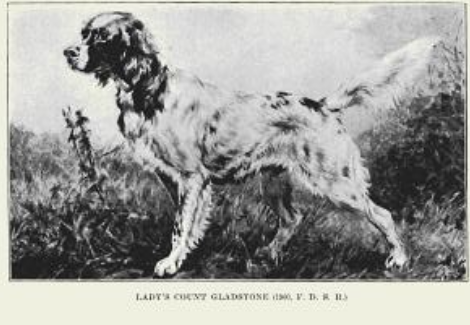
I research books upon books, history, genetics, anatomy, health, and nutrition. I study the studies. Most every night I end up surrounded with reference books, pedigrees, photos and videos of every Llewellin I can find information on. This breed is my obsession. I am fascinated with them. I sleep with them, I take them everywhere, I work them in every situation I can think of, I hunt them, I watch them. I mean watch them, study them—their eyes, their tails, their gait, their nose, their toes, feet and ears. How they move, how they eat, drink, how they every-so-softly take a treat from my hand, watch them sleep, listen to them breathe, watch them work cover, run, jump, climb trees :-), carry a retrieve, how they hold their tail, their stance, their gaze, their reactions to everything. How bold or soft are they? How quickly do they learn?
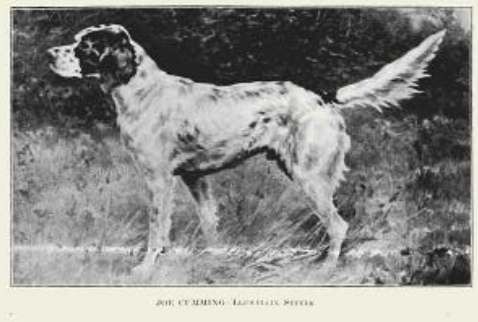
I worry about their nutrition. I worry if they are warm enough, cool enough. I obsess of creative ways to finance and build the most beautiful, but mostly most comfortable for the dogs, facility. How can I get more land to work the dogs? How can I keep more of our pups? How can I spend more time working them? What can I sell, give-up, or do to fund this? How can I obtain more dogs? How can I feed them even better? How can I fund my dream of an 8-month tour of the U.S. hunting every upland bird species with everyone of our dogs in tow? I want with all of my being to do nothing else everyday but to work the dogs, spend every minute raising and working with our puppies, studying them, talking with every Llewellin Setter breeder and owner finding out everything about every Llewellin Setter.
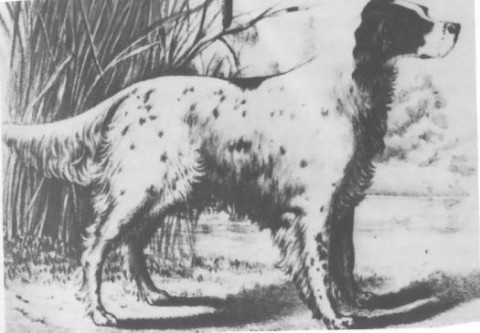
I realize there will be set backs—perhaps even complete failure. If I think a pup isn’t the best the owner has ever had it makes me miserable, lamenting over how it could possibly happen. How could excellent parents not produce all excellent pups? It makes me even more determined to better the breeding plan.

I realize that I really do not have all that much to do with it, except choosing from the best I can find. The Llewellin Setter Database was created with this in mind—although I haven’t kept up with my vision of what this resource needs to be but I’ll get there—to help breeders track every FDSB Llewellin Setter and maintain extensive notes and photos so that we can choose those that are the most natural, the most perfectly conformed, the most intelligent, and the healthiest. Then, bring them up, nurture them, work them, live with them, hunt them, study them. Then make the most informed breeding decisions. If so, which mating will produce the most consistent puppies—not one good puppy and the rest mediocre—but every pup in the litter (close your eyes and pick) of excellence showing the most natural hunting ability, intelligence, perfectly built, structurally sound, healthiest lot of Llews to ever grace the grouse woods, prairies, and beyond? Which two can without a doubt throw their traits to their offspring? Which one will be the blue hen or the prepotent sire? Not all do, you know. You can have the best bird dog that ever lived, but can it be reproduced? What are the best-producing pairs? What are the best-producing families? Where they produce true to type, generation after generation. With the heterogeneous breeding programs practiced by most, this becomes more and more difficult. It’s a crap shot with open-pedigreed dogs. Purchasing a pup intended for a breeding program is so risky because of all the unknowns; What is known about the parents, grandparents, and siblings? Are we even able to contact the owners of the grandparents? Can they tell us anything other than “they are/were the best”? What recessive traits could show up and then, sometimes not for several matings or generations? And exactly—I mean exactly— is “genetic” or environmental (conditions caused by toxins in homes, on the lawns, tick and flea poisons, garbage-filled commercial dog foods, lack of exercise or too much exercise, too much calcium, too much protein, dogs kept on concrete, cheap vaccinations, etc?)? And how will we know this if we are not hunting our breeding dogs, breeding from “families” kept pure, feeding the very best we can afford, researching, and retaining pups or at the least, remaining in contact with the owners of the pups?
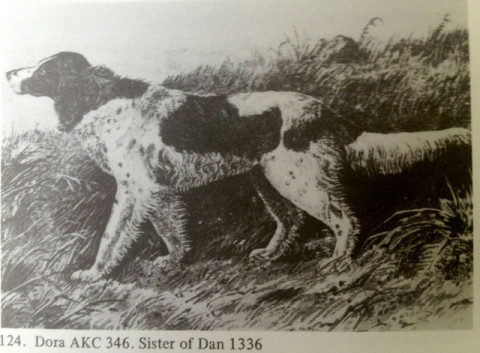
These are the questions for which the answers are only found by knowing our Llewellins, working them, living with them, and breeding them. Then bringing up the pups, watching everything they do from birth until the time they leave, keep extensive notes and records, and if all goes as planned, watch them grow through the eyes of their new families. This is why I will only sell to hunting families. This is the reason I ask—even beg, and put it in our contract—that a pup receives every opportunity to pursue upland game and provide us with frequent updates and photos. I seriously wish I could raise entire litters of puppies until they are perhaps, 18 months old. That would be my perfect world. Raise everyone of them to see for myself how they turn out. I would at least like to retain all pups for 3–4 months. This would, of course, make our clients furious as most can’t stand that we make them wait until pups are 6-weeks old before allowing “picking” to start. But I want to know them—all of them. It’s not because I am a control freak, it is for the future of the Llewellin Setter.
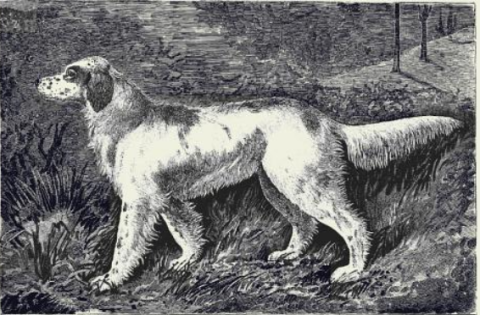
Selling our puppies to only hunting families doesn’t make me very popular (I get sworn at, hung up on, and have even been called “uneducated” when I refuse to sell to a non-hunter) or very prosperous, but for the life of me, I do not understand what the hell (sorry, I swore, but I can’t help it) anyone that doesn’t hunt upland birds would want with a Llewellin Setter. There are over 300 breeds of dogs in the world today and they have to pick the Llewellin Setter? I don’t understand. There are the exceptional owners that may not hunt, but do give their Llewellins every opportunity to pursue birds. But, otherwise, this is something that makes me go out of my mind. livid. But mostly, it just makes me very sad. We have the most natural breed of bird dog (that I’ve ever personally seen) to grace God’s Earth. The Llewellin hasn’t been ruined yet. The ancient hunting instinct has not been bred out in place of “looks” for show purposes or for “companions” like the Gordon or Irish Setter or countless other breeds once bred for hunting. We have this wonderful gift from all the great breeders before us in the Llewellin Setter that has only ever been bred for hunting and it will, too be ruined.
Edwark Lavarack (1872) writes:
I have long had the idea that dogs carefully bred together, carefully educated, and carefully shot over, that their instinct and sagaciousness has developed and increased; that a clever dog imparts his cleverness and peculiarities to his progeny. Man has become what he is by study, observation, thought, and education. Why should not the dog, by careful training, improve likewise?
If I may so term it, it is the force of sympathy and constantly breeding from the same good strain that has made all sporting dogs what they are. To make my meaning clearer, it is my opinion that a breed of dogs carefully tutored, generation after generation, acquire from habit and usage an innate predisposition to hunt intuitively, which causes them to be superior to dogs whose faculties have not been so developed and cultivated, or in other words, imparted an inborn goodness. (p. 3)
Unfortunately, market breeding seems to now dominate this breed, now, too. It will not take long before we see the “companion” lines of which all natural instinct has been bred out and maybe a few “hunting” lines being maintained. The beautiful thing is that the Llewellin Setter is (or was) the perfect companion/family dog and a bird-finding machine. Why would anyone want to ruin or change that?
But, this is just one obsessed person’s view… rambling passionately—or is it passionately rambling?— in the middle of the night.
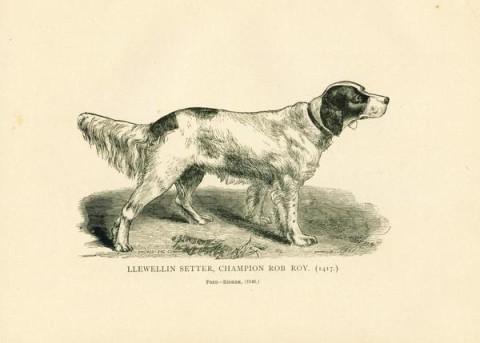
And that, my friends, will continue to be my goal, my passion, my obsession—to humbly remain a temporary custodian and maintain the Llewellin Setter as a world-class gun dog. I may go broke doing it. I may fail miserably, but you have my word that I’ll give it everything I have.
With that, as always, hug your Llewellin Setter tonight and take him hunting tomorrow. Or at least take him for a run tomorrow. And make sure you put in for all those vacation days in October for a hunting trip to one of the few wild places we have left and allow your Llew to teach you some things about hunting upland birds.
-M.

You must be logged in to post a comment.